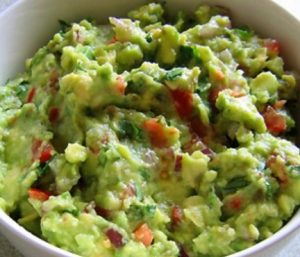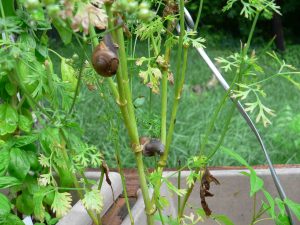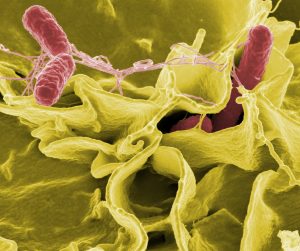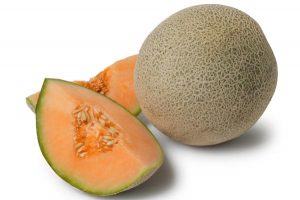23 sick: Cryptosporidiosis outbreak in Illinois linked to 4-H projects
The Clark and Champaign county health departments say they’re investigating 23 possible cases of cryptosporidiosis linked to dairy calves brought to the region for youth 4-H projects.
The calves were sold to children. A Clark County epidemiologist says hydrogen peroxide is the only known disinfectant for killing the parasite. No other information has been released.
180 dead, 948 sick: Polony fingered for Listeria in S. Africa
South Africans were told on Sunday not to consume ready-to-eat processed meat as the government identified the source of a listeria outbreak that has killed 180 people as a cold meat product made by the country’s biggest consumer foods group.
 The meat, known as “polony“, made by Tiger Brands unit Enterprise Food and by RCL Foods, would be recalled from stores, Health Minister Aaron Motsoaledi said (it’s similar to balony).
The meat, known as “polony“, made by Tiger Brands unit Enterprise Food and by RCL Foods, would be recalled from stores, Health Minister Aaron Motsoaledi said (it’s similar to balony).
“We advise members of the public to avoid all processed meat products that are sold as ready-to-eat,” Motsoaledi said, adding that, due to the risk of cross-contamination, all such foods were a potential health hazard.
“We can now conclude scientifically that the source of the present outbreak is the Enterprise Food production facility located in Polokwane,” Motsoaledi told a briefing at the offices of the National Institute of Communicable Diseases.
Tiger Brands said it was cooperating with authorities and RCL Foods said it would suspend all production of its Rainbow Polony brand.
Motsoaledi said although RCL Foods had not been identified as a source of the outbreak, a facility owned by the firm was under investigation. Inquiries were ongoing at a second facility run by Enterprise Foods to establish if it too had contributed.
The outbreak has caused 180 fatalities and 948 reported cases since January 2017.
Tiger Brands spokeswoman Nevashnee Naicker said: “We are all extremely concerned by listeriosis – we all want to find the source or sources of listeriosis, together with the government.”
RCL Foods chief legal officer Stephen Heath said the company was recalling its polony products even though test results were still pending.
“RCL Foods is sharing all results from its testing, both internally and externally, with the relevant authorities,” Heath said. “We will continue to take every precaution to safeguard our products as well as our consumers.
South African supermarket operator Pick n Pay said it had withdrawn the products from its shelves.
Listeria in rockmelon: ‘Misinformation’ is language of deniers
On Sept. 9, 2011, reports first surfaced of an outbreak of Listeria linked to cantaloupe – known as rock melons in Australia — grown in Colorado. Already two were dead and seven others sick.
 By the end of the outbreak, 33 people were killed and at least 140 sickened.
By the end of the outbreak, 33 people were killed and at least 140 sickened.
On Aug. 17, 2012, the U.S. Centers for Disease Control announced an outbreak of Salmonella linked to cantaloupe that ultimately killed three people and sickened 270 in 26 states.
In Australia, a third death has now been linked to the Listeria-in-rockmelon outbreak, and the number of sick people has risen to 12.
Already, an Australian rockmelon grower is saying “misinformation” about the listeria outbreak will have a negative impact on growers.
The only misinformation – or fake news – is the lack of information to regain consumer confidence and trust.
Sadly, the number of dead and sick will probably grow, because Listeria has an incubation period of up to six weeks. The melon you ate five weeks ago could make you sick with listeriosis tomorrow.
This is not misinformation, it’s biology.
A table (that needs to be updated) of cantaloupe-or-rockmelon-related outbreaks is available here.
Death by cheesecake: New York woman accused of poisoning her look-alike to steal identity
A Russian native from Brooklyn has, according to USA Today, been accused of poisoning her look-alike with a cheesecake and then stealing her identity and other property.
 Forty-two-year-old Viktoria Nasyrova was arraigned Tuesday on attempted murder, burglary, assault and other charges. She was arrested in March last year. Her lawyer declined to comment.
Forty-two-year-old Viktoria Nasyrova was arraigned Tuesday on attempted murder, burglary, assault and other charges. She was arrested in March last year. Her lawyer declined to comment.
Prosecutors say Nasyrova visited the Queens home of the fellow Russian speaking victim in 2016 bearing a cheesecake tainted with a tranquilizer.
They say the 35-year-old victim ate the cheesecake, fell ill and passed out. She was found the next day on her bed unconscious with pills scattered about as if she tried to kill herself.
The victim later realized her passport, employment card, a gold ring and cash were missing.
Nasyrova faces up to 25 years in prison if convicted.
C perfringens in herbs and spices
Clostridium perfringens spores are able to persist under harsh conditions, and thus, are predestined as high risk hazards in the food category dried spices and herbs.
 In the present study, C. perfringens spores were produced, and then, screened toward their susceptibility to the antimicrobial activity of nine condiments. While heat activation for induction of spore germination led to a significant increase in recovery by almost 1 log10 colony forming units, the supplementation of germinants was negligible. The enumeration of C. perfringens before heat treatment revealed no detrimental effects by potential antimicrobial active compounds of the condiments. However, after heat activation a significant reduced recovery was determined for cinnamon and allspice in comparison to the control but it was still higher than without treatment. Probably, the heat improved the extraction of compounds inhibiting the germination of the spore and/or the outgrowth of the cell.
In the present study, C. perfringens spores were produced, and then, screened toward their susceptibility to the antimicrobial activity of nine condiments. While heat activation for induction of spore germination led to a significant increase in recovery by almost 1 log10 colony forming units, the supplementation of germinants was negligible. The enumeration of C. perfringens before heat treatment revealed no detrimental effects by potential antimicrobial active compounds of the condiments. However, after heat activation a significant reduced recovery was determined for cinnamon and allspice in comparison to the control but it was still higher than without treatment. Probably, the heat improved the extraction of compounds inhibiting the germination of the spore and/or the outgrowth of the cell.
Practical applications
This study contributes to the understanding of the production of C. perfringens spores and their recovery from artificially spiked condiments. For an efficient spore production the following four factors are essential with decreasing importance, namely (a) the strain selection, (b) the preparation via a two-step approach, (c) the heat activation, and (d) the supplementation of germination factors. The detection of the actual contamination is of major importance especially for food control institutions. Neglecting the heat activation poses a potential risk for underestimation and false-negatives during food control analyses. Consequently, it is recommended to enumerate before and after heat treatment to detect vegetative cells as well as spores.
Production of Clostridium perfringes spores and their recovery from artificially spiked spices and herbs
1 March 2018
Journal of Food Safety
Philipp Lins
DOI: 10.1111/jfs.12453
http://onlinelibrary.wiley.com/doi/10.1111/jfs.12453/abstract
Raw is risky: Fresh herbs can be contaminated
I’m not a fan of the guac, ever since a hungover former partner spewed vile smelling green stuff at the side of the road decades ago.
 And I’m wary of fresh herbs, based on previous outbreaks.
And I’m wary of fresh herbs, based on previous outbreaks.
So is the U.S. Food and Drug Administration which on Feb. 23, 2018, revealed details on just how many bacteria are hiding in fresh, store-bought herbs. The agency plans to continue testing herbs through 2019 to thoroughly assess their “rates of bacterial contamination.”
The plan is to test 1,600 samples of items “typically eaten without having undergone a ‘kill step,’ such as cooking, to reduce or eliminate bacteria.” These items include fresh cilantro, parsley, and basil.
This first round of results revealed that of the 139 fresh herb samples tested, four tested positive for salmonella and three contained E. coli bacteria.
The Packer noted the testing found no pathogens in the U.S. herbs versus imported herbs.
In the same period, the FDA found that three of the 58 U.S.-processed avocado products that were tested had listeria, and one of the 49 imported samples had listeria.
 From 1996 to 2015, the FDA linked 2,699 illnesses and 84 hospitalizations to fresh herbs.
From 1996 to 2015, the FDA linked 2,699 illnesses and 84 hospitalizations to fresh herbs.
The FDA also plans to sample processed avocado for similar reasons – from 2005 to 2015, 525 illnesses were linked to avocados in 12 separate outbreaks. Of 107 avocado and guacamole samples in the initial results, four contained listeria. Avocados, the FDA notes, “have a high moisture content and a non-acidic pH level, conditions that can support the growth of harmful bacteria.”
Genetics is cool: Scientists find single letter of genetic code that makes African Salmonella so dangerous
Scientists at the University of Liverpool have identified a single genetic change in Salmonella that is playing a key role in the devastating epidemic of bloodstream infections currently killing around 400,000 people each year in sub-Saharan Africa.
 Invasive non-typhoidal Salmonellosis (iNTS) occurs when Salmonella bacteria, which normally cause gastrointestinal illness, enter the bloodstream and spread through the human body. The African iNTS epidemic is caused by a variant of Salmonella Typhimurium (ST313) that is resistant to antibiotics and generally affects individuals with immune systems weakened by malaria or HIV.
Invasive non-typhoidal Salmonellosis (iNTS) occurs when Salmonella bacteria, which normally cause gastrointestinal illness, enter the bloodstream and spread through the human body. The African iNTS epidemic is caused by a variant of Salmonella Typhimurium (ST313) that is resistant to antibiotics and generally affects individuals with immune systems weakened by malaria or HIV.
In a new study published in PNAS, a team of researchers led by Professor Jay Hinton at the University of Liverpool have identified a specific genetic change, or single-nucleotide polymorphism (SNP), that helps the African Salmonella to survive in the human bloodstream.
Professor Hinton explained: “Pinpointing this single letter of DNA is an exciting breakthrough in our understanding of why African Salmonella causes such a devastating disease, and helps to explain how this dangerous type of Salmonella evolved.”
SNPs represent a change of just one letter in the DNA sequence and there are thousands of SNP differences between different types of Salmonella. Until now, it has been hard to link an individual SNP to the ability of bacteria to cause disease.
Using a type of RNA analysis called transcriptomics, the scientists identified SNPs that affected the level of expression of important Salmonella genes. After studying 1000 different SNPs, they found a single nucleotide difference that is unique to the African ST313 strain and causes high expression of a virulence factor called PgtE that prevents Salmonella being killed in the bloodstream.
The scientists then used an advanced genetic technique to switch the SNP found in the African strain to the version found in the type of Salmonella that causes food poisoning and gastroenteritis globally. Finally, they used an animal infection model to show that the bacteria with the altered SNP had lost their ability to cause disease.
Professor Hinton added: “We’ve developed a new investigative approach to understand bacterial infection, which is the culmination of six years of work. This combination of genomics and transcriptomics could bring new insights to other important pathogens, and prepare us for future epidemics.”
Professor Melita Gordon, a University of Liverpool clinician-scientist working in Malawi, who was involved in the project, said: “The ability of iNTS Salmonella strains to cause such serious disease leads to devastating and frequently fatal consequences for very young children, and for adults who may be the chief breadwinners in their homes and communities. We see iNTS disease placing an enormous burden on thinly-stretched local health facilities and hospitals in Malawi, particularly because diagnosis is difficult, and treatment options are limited. It is now urgent that a vaccine is developed to combat this dangerous infection.”
Disa L. Hammarlöf, Carsten Kröger, Siân V. Owen, Rocío Canals, Lizeth Lacharme-Lora, Nicolas Wenner, Anna E. Schager, Timothy J. Wells, Ian R. Henderson, Paul Wigley, Karsten Hokamp, Nicholas A. Feasey, Melita A. Gordon, Jay C. D. Hinton. Role of a single noncoding nucleotide in the evolution of an epidemic African clade ofSalmonella. Proceedings of the National Academy of Sciences, 2018; 201714718 DOI: 10.1073/pnas.1714718115
10 sick: CDC says Jimmy John’s latest Salmonella-in-sprouts outbreak over
But will Jimmy John’s go back to using raw sprouts on sandwiches?
Probably, outbreaks haven’t stopped them before.
 The U.S. Centers for Disease Control (CDC), public health and regulatory officials in several states, and the U.S. Food and Drug Administration investigated a multistate outbreak of Salmonella Montevideo infections.
The U.S. Centers for Disease Control (CDC), public health and regulatory officials in several states, and the U.S. Food and Drug Administration investigated a multistate outbreak of Salmonella Montevideo infections.
Ten people infected with the outbreak strain of Salmonella Montevideo were reported from three states.
No hospitalizations and no deaths were reported.
Epidemiologic evidence indicated that raw sprouts were the likely source of this multistate outbreak.
Ill people in this outbreak reported eating raw sprouts on sandwiches served at Jimmy John’s restaurants in Illinois and Wisconsin.
One ill person in this outbreak reported eating raw sprouts purchased from a grocery store in Minnesota.
This outbreak appears to be over. Any contaminated sprouts that made people sick in this outbreak would now be older than their recommended shelf life. FDA and state, and local regulatory officials conducted traceback investigations to help determine the source of the sprouts and their distribution chain. To date, no contamination source has been identified.
Public health investigators used the PulseNet system to identify illnesses that may be part of this outbreak. PulseNet is the national subtyping network of public health and food regulatory agency laboratories coordinated by CDC. DNA fingerprinting was performed on Salmonella bacteria isolated from ill people by using techniques called pulsed-field gel electrophoresis (PFGE) and whole genome sequencing (WGS). CDC PulseNet manages a national database of these DNA fingerprints to identify possible outbreaks. WGS gives a more detailed DNA fingerprint than PFGE.
As of February 27, 2018, 10 people infected with the outbreak strain of Salmonella Montevideo were reported from 3 states.
Illnesses started on dates ranging from December 20, 2017 to January 28, 2018. Ill people ranged in age from 26 to 56, with a median age of 42. All 10 (100%) were female. No hospitalizations and no deaths were reported.
Epidemiologic evidence indicated that raw sprouts were the likely source of this multistate outbreak.
In interviews, ill people answered questions about the foods they ate and other exposures in the week before they became ill. Eight (80%) of ten people interviewed reported eating at multiple Jimmy John’s restaurant locations. Of these eight people, all eight (100%) reported eating raw sprouts on a sandwich from Jimmy John’s in Illinois and Wisconsin. This proportion is significantly higher than results from a survey[PDF – 29 pages] of healthy people, in which 3% reported eating sprouts on a sandwich in the week before they were interviewed. Two ill people in Wisconsin ate at a single Jimmy John’s location in that state. One ill person reported eating raw sprouts purchased from a grocery store in Minnesota.
This outbreak appears to be over. Any contaminated sprouts that made people sick in this outbreak would now be older than their recommended shelf life. FDA and state, and local regulatory officials conducted traceback investigations to help determine the source of the sprouts and their distribution chain. To date, no contamination source has been identified.
Regardless of where they are served or sold, raw and lightly cooked sprouts are a known source of foodborne illness and outbreaks. People who choose to eat sprouts should cook them thoroughly to reduce the risk of illness.
Here’s a table of over 75 sprout-related outbreaks going back to 1973.
Listeriosis linked to rockmelon in Australia
About a week ago I was chatting with our contractor – we really spend too much time chatting instead of working, and Amy often intervenes – and somehow we got on about the microbiological risks of cantaloupe (or rockmelon as they call it here).
 This morning Australians awoke to the news from the NSW Food Authority that two people have died and eight were sick from Listeria-linked to cantaloupe (not the 3 dead and 7 sick reported earlier).
This morning Australians awoke to the news from the NSW Food Authority that two people have died and eight were sick from Listeria-linked to cantaloupe (not the 3 dead and 7 sick reported earlier).
All states and territories are working together to investigate the outbreak and to date they have identified ten cases in elderly patients in NSW (six), Victoria (one) and Queensland (three) with onset of illness notification dates between 17 January and 9 February 2018. All 10 cases consumed rockmelon prior to their illness.
The outbreak has been linked to a grower in Nericon NSW. The company voluntarily ceased production on Friday 23 February 2018, shortly after being notified of a potential link to illness and is working proactively with the Authority to further investigate how any contamination could have occurred in order to get back into production as soon as possible.
Any affected product is being removed from the supply chain, so consumers can be assured rockmelons currently available on shelves are not implicated in this outbreak, but people may already have listeria-infected rockmelons in their homes purchased at an earlier time.
Contaminated water, fertiliser, contact with animals or insufficient cleaning of rockmelons prior to sale are all risk factors for melons becoming contaminated.
The contamination is on the fruit’s skin, not in the flesh.
NSW Health director of communicable diseases Vicki Shepherd said, “If there are levels of listeria on the skin then when you cut it, it can be transferred into the surface where you then eat it.”
Our contractor said today, did you see the news, guess Doug knows a thing.
It’s easy to know a thing if you pay attention. Rockmelons have been repeatedly linked to previous cases of listeria, including an outbreak that killed 33 Americans in 2011.
A table (that needs to be updated) of cantaloupe-or-rockmelon-related outbreaks is available here.



